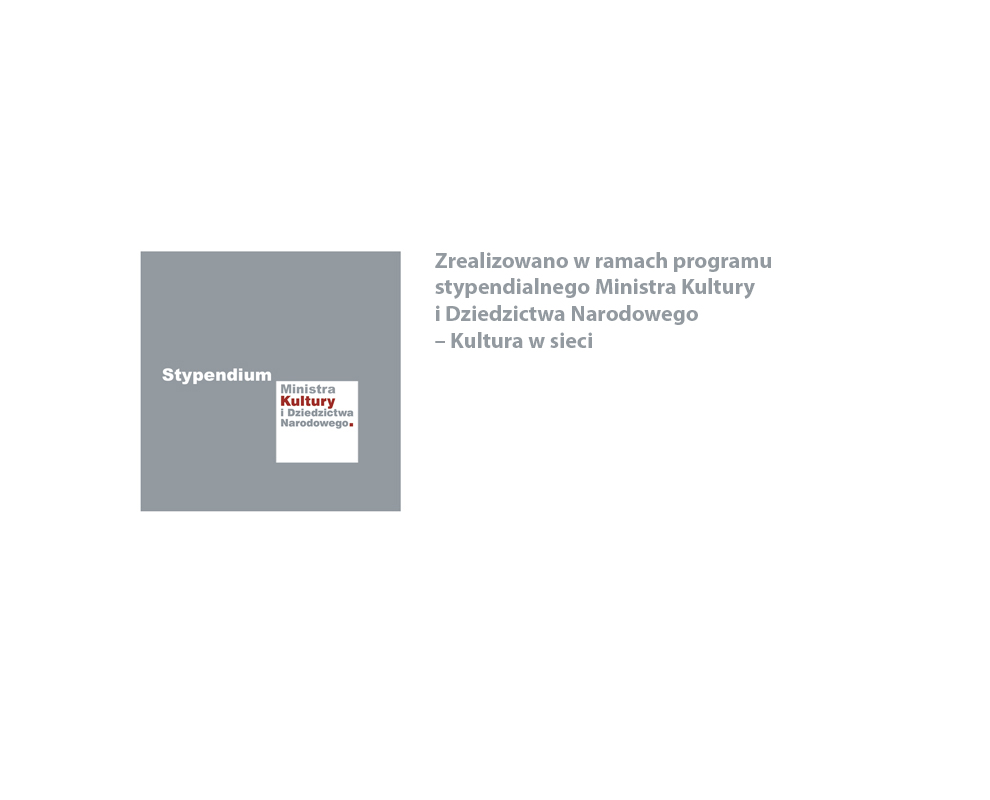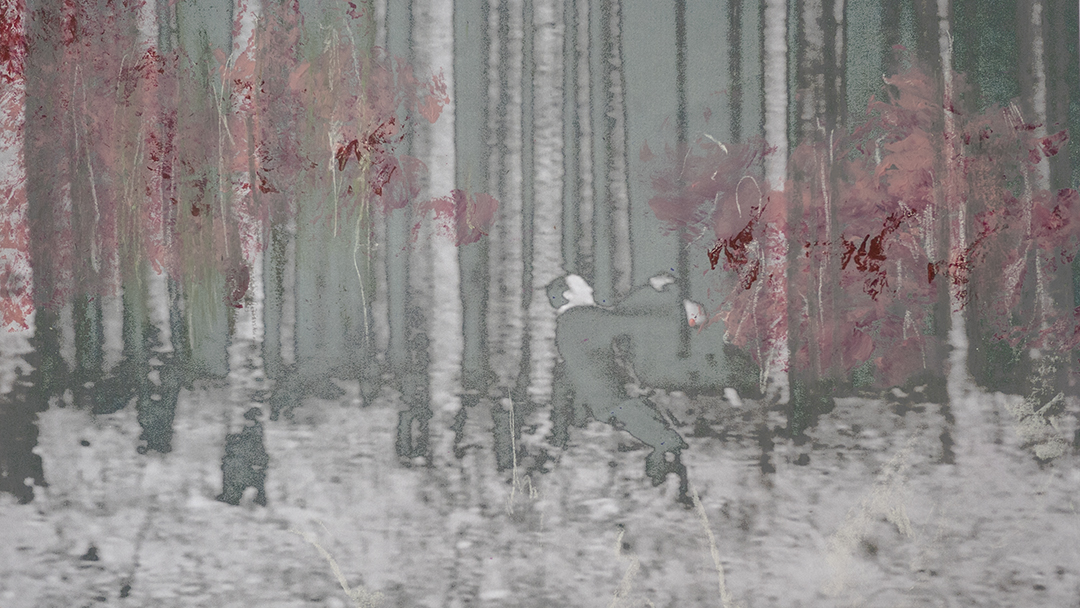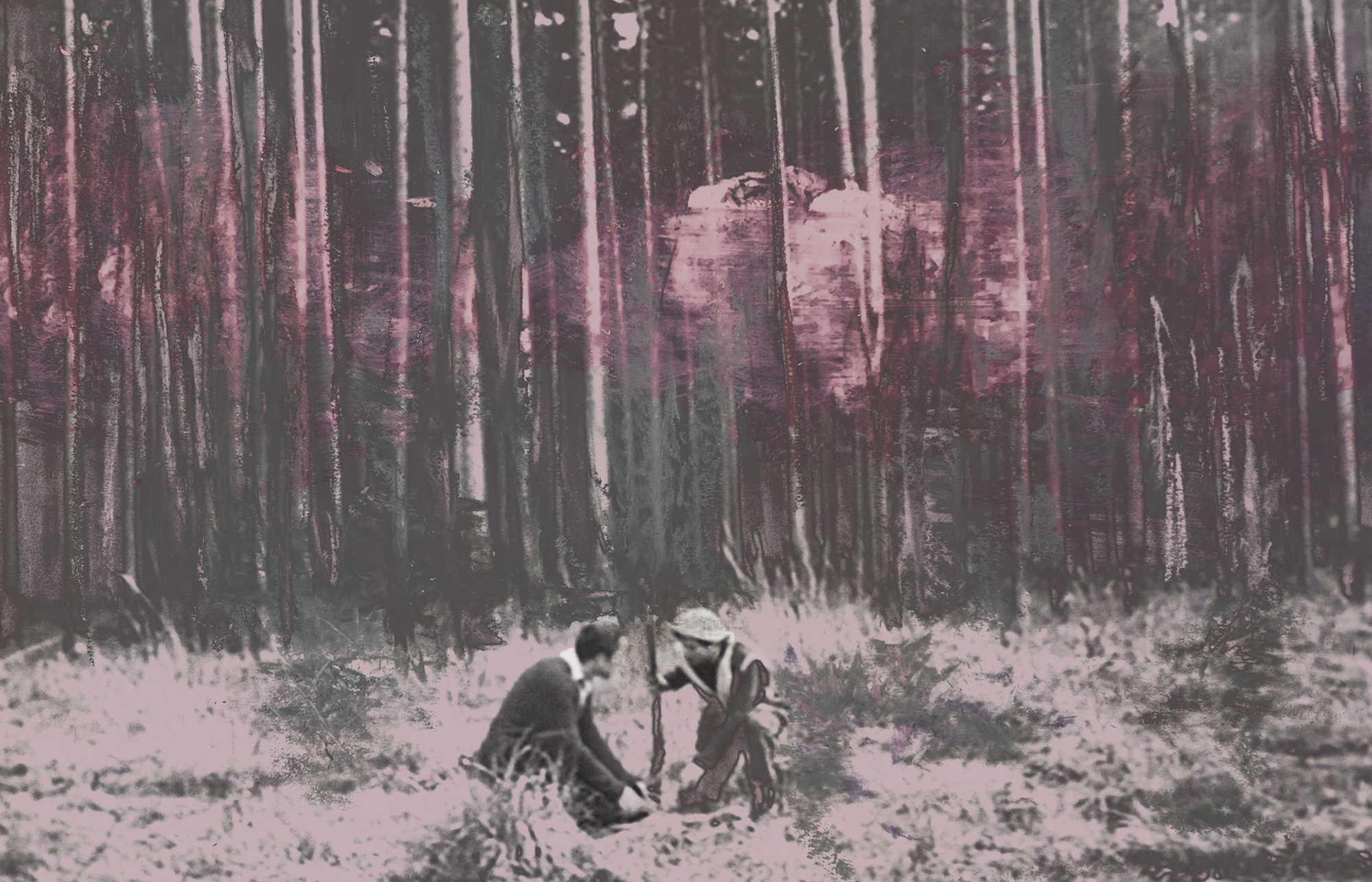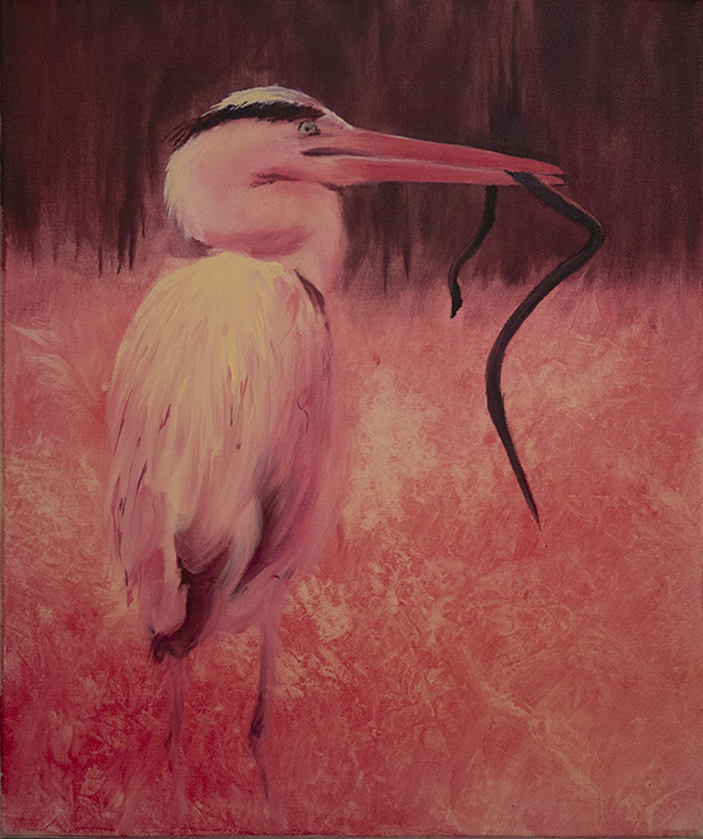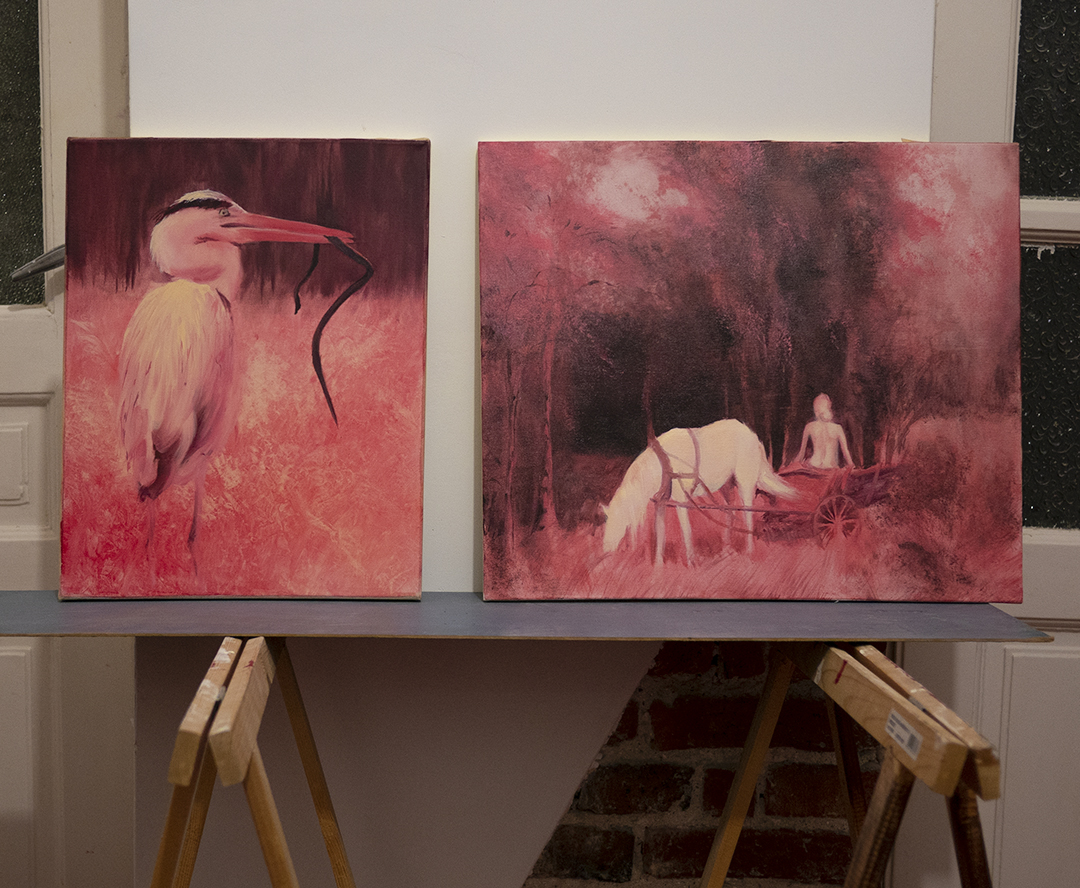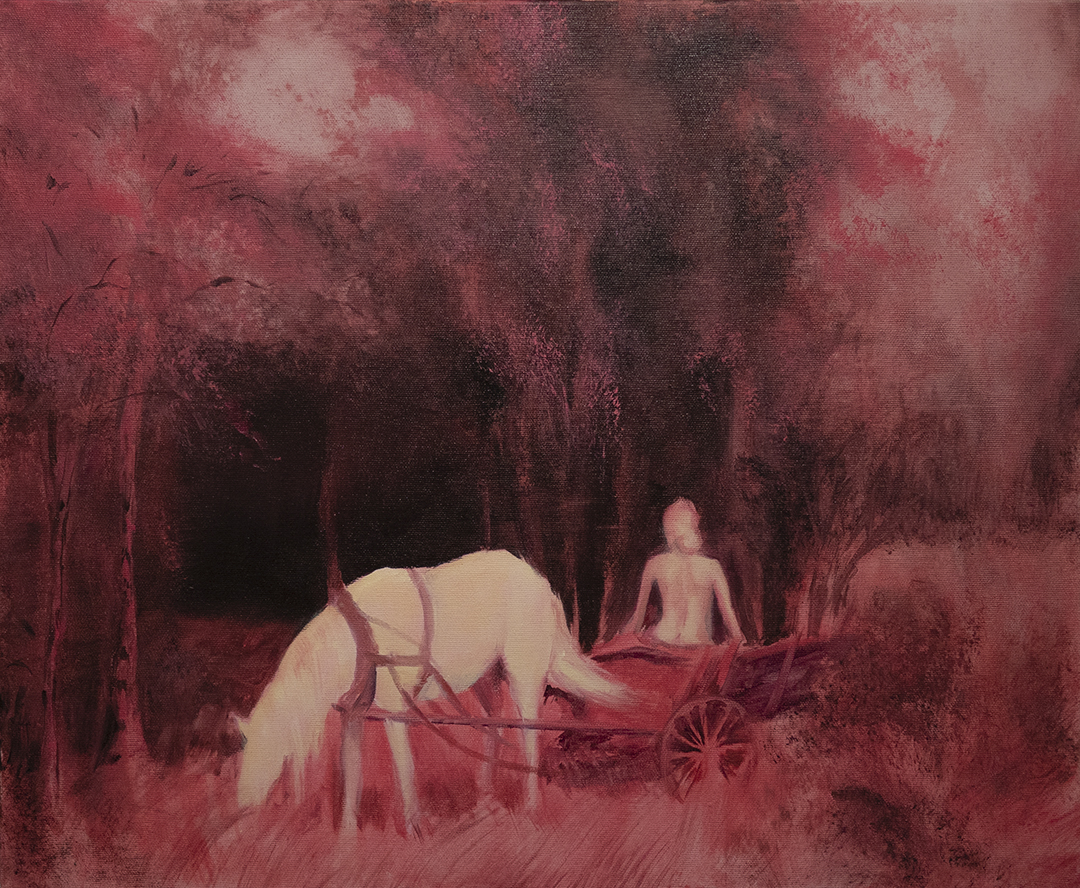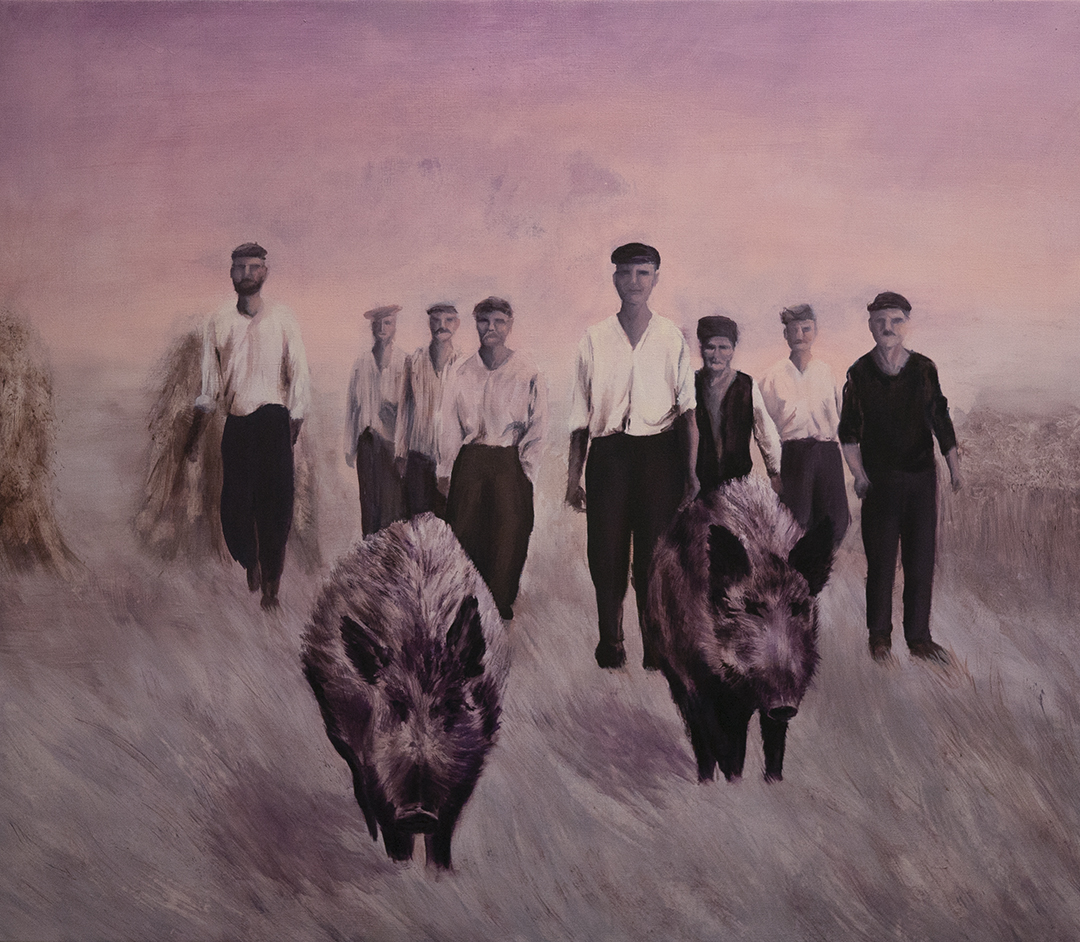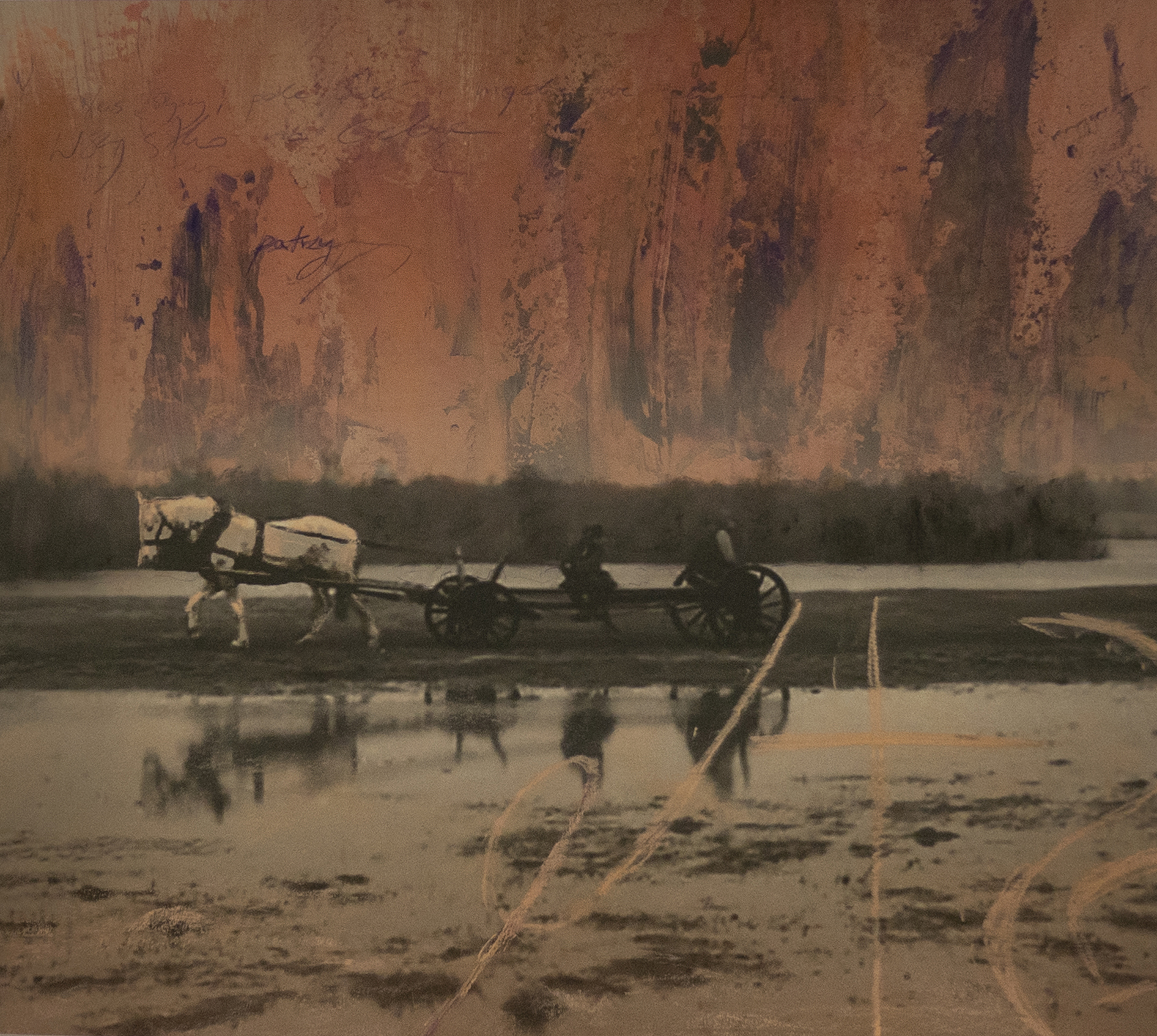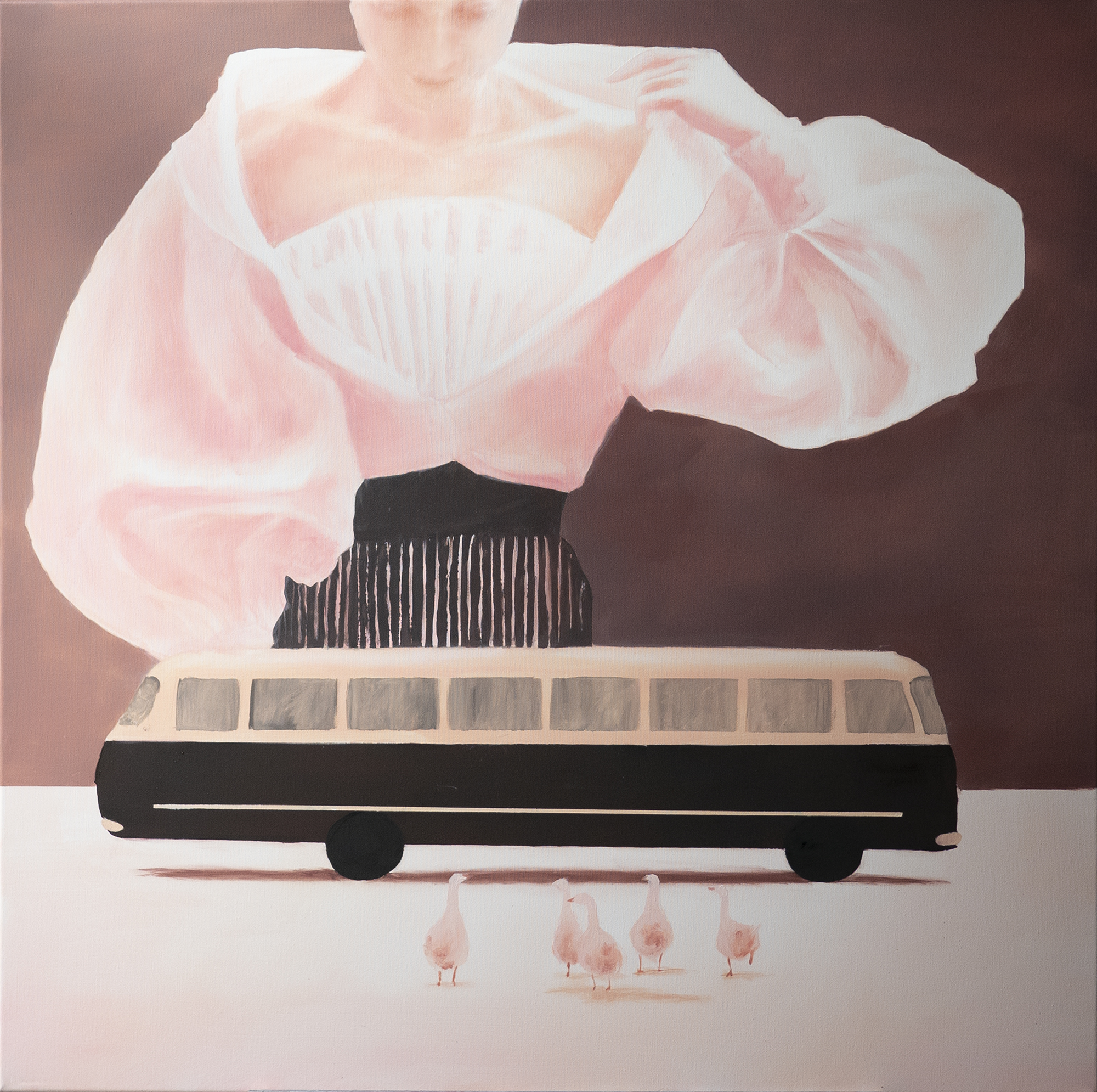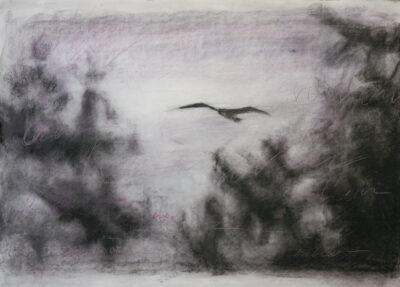
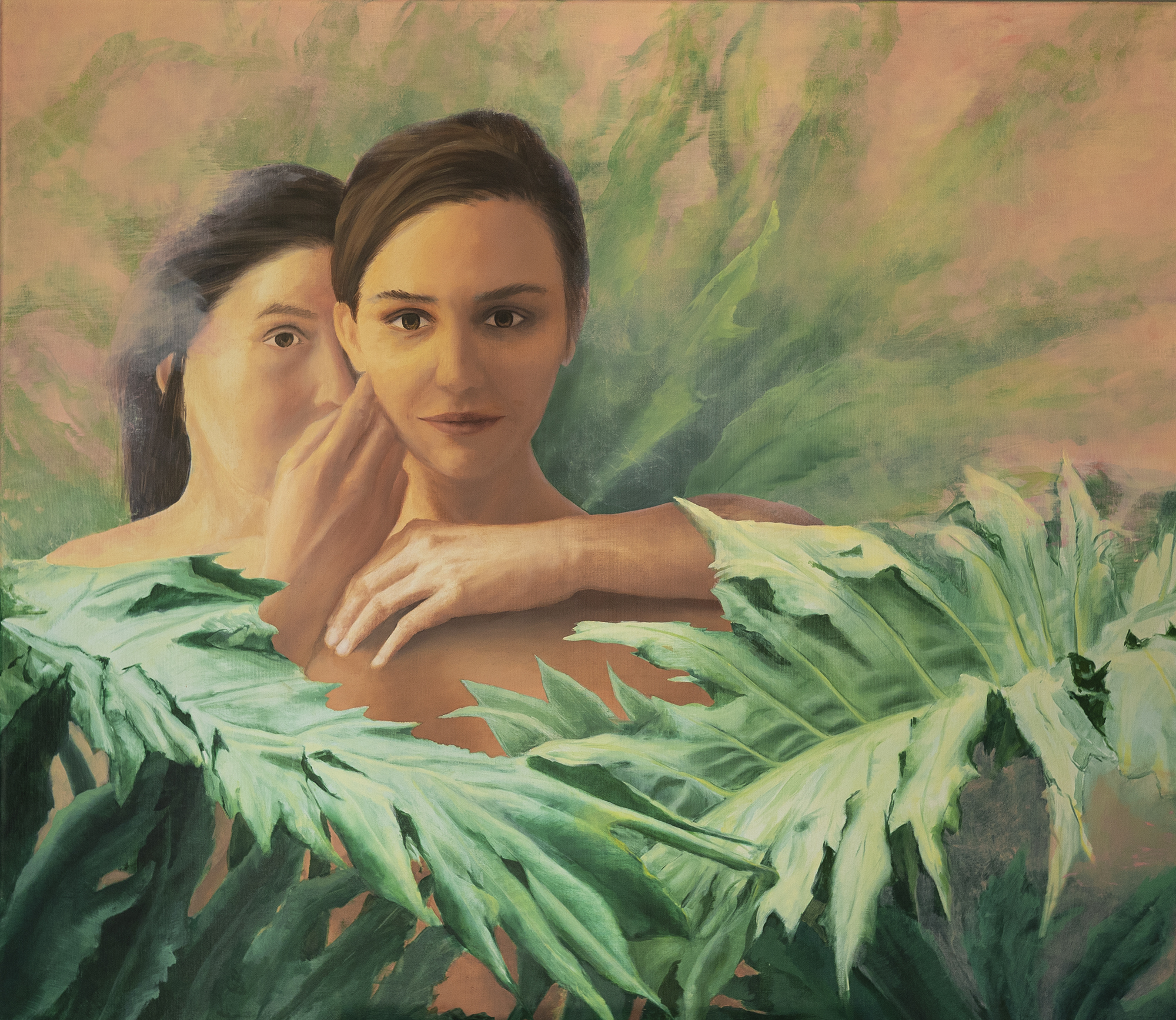
This art work is a diptich. A grey heron is watching the scene from the other painting. I find this bird extremely extraordinary – it’s not only one of very rare animals which can eat snakes but also has many interesting incarnations. In this context very interesting is this one from the Greek mitology. In Leszczynski’s movies, the characters reappear (kaziuk is later seen when smashing wooden tables at a dance in “Siekierezada”). In case of my works, animals are those who permeate.
This is Kaziuk.
Or rather, his frustration.
Frustration that those clots still believe
that if they cut grain with a scythe instead of a sickle,
they will be punished by God.
„Idący zaś szedł i to wszystko. Nic poza tym. Był tylko ruchem, ruchomym punktem, ruchomą kreską na drodze. Nawiedzony był tym rzadkim szczęśliwym czasem niemyślenia. Ta fala błoga, ten obłok biały miękki i w środku pusty napłynął na idącego. Zimny bo zimny wiatr owiewał wiecznie rozgorączkowany rozpalony rozbuchany żarem łeb. Idący to czuł i tylko to. Było tak jakby dmuchający wiatr wciskał z powrotem na miejsce próbujące się wydostać z głowy myśli. Albo jeszcze dokładniej: było tak, jakby idący szedł bez głowy, jakby ją sobie zdjął i trzymał pod pachą albo schował do worka, co go niósł na plecach. O, piękne, piękne wakacje bezmyślności wielkiej zupełnej. Błogosławiony odpoczynek od piekła i piekielnego raju myślenia. Błogosławiona bezmyślności młoda zdrowa wdowa”. /E.Stachura “Siekierezada”/
